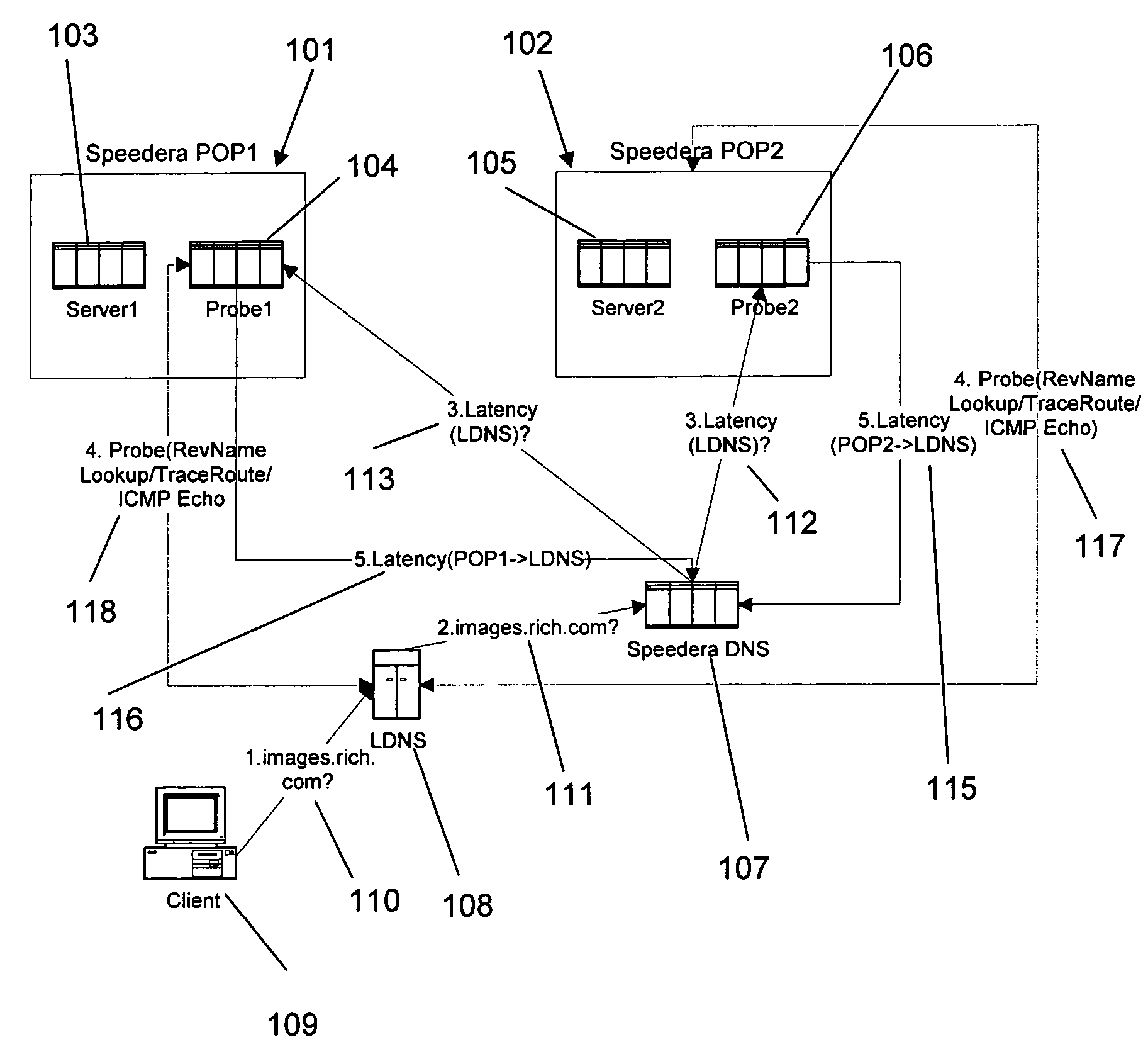Method and apparatus for determining latency between multiple servers and a client
a technology of latency and multiple servers, applied in the field of routing requests, can solve the problems of difficult hop count, critical information management, ip hops, etc., and achieve the effect of reducing network traffi
- Summary
- Abstract
- Description
- Claims
- Application Information
AI Technical Summary
Benefits of technology
Problems solved by technology
Method used
Image
Examples
Embodiment Construction
[0026]The invention is embodied in a method and apparatus for determining latency between multiple servers and a client in a computer environment. A system according to the invention provides a more precise method of determining dynamic hop counts and optimal content servers. In addition, the invention provides a system that reduces network traffic required for measuring the dynamic hop counts.
[0027]The invention provides a new method to determine the dynamic hop count between two nodes (client and server). This new method provides a dynamic hop count that is more precise than the hop count obtained using the Border Gateway Protocol (BGP).
[0028]The latency probes in a Speedera Network are responsible for determining the latency between the Speedera servers and a client. This latency information is used by the Speedera Domain Name Server (SPDNS) to direct a client to the server that is “closest” to the client in latency.
[0029]Referring to FIG. 1, each Speedera Point of Presence (POP)...
PUM
 Login to View More
Login to View More Abstract
Description
Claims
Application Information
 Login to View More
Login to View More - R&D
- Intellectual Property
- Life Sciences
- Materials
- Tech Scout
- Unparalleled Data Quality
- Higher Quality Content
- 60% Fewer Hallucinations
Browse by: Latest US Patents, China's latest patents, Technical Efficacy Thesaurus, Application Domain, Technology Topic, Popular Technical Reports.
© 2025 PatSnap. All rights reserved.Legal|Privacy policy|Modern Slavery Act Transparency Statement|Sitemap|About US| Contact US: help@patsnap.com



